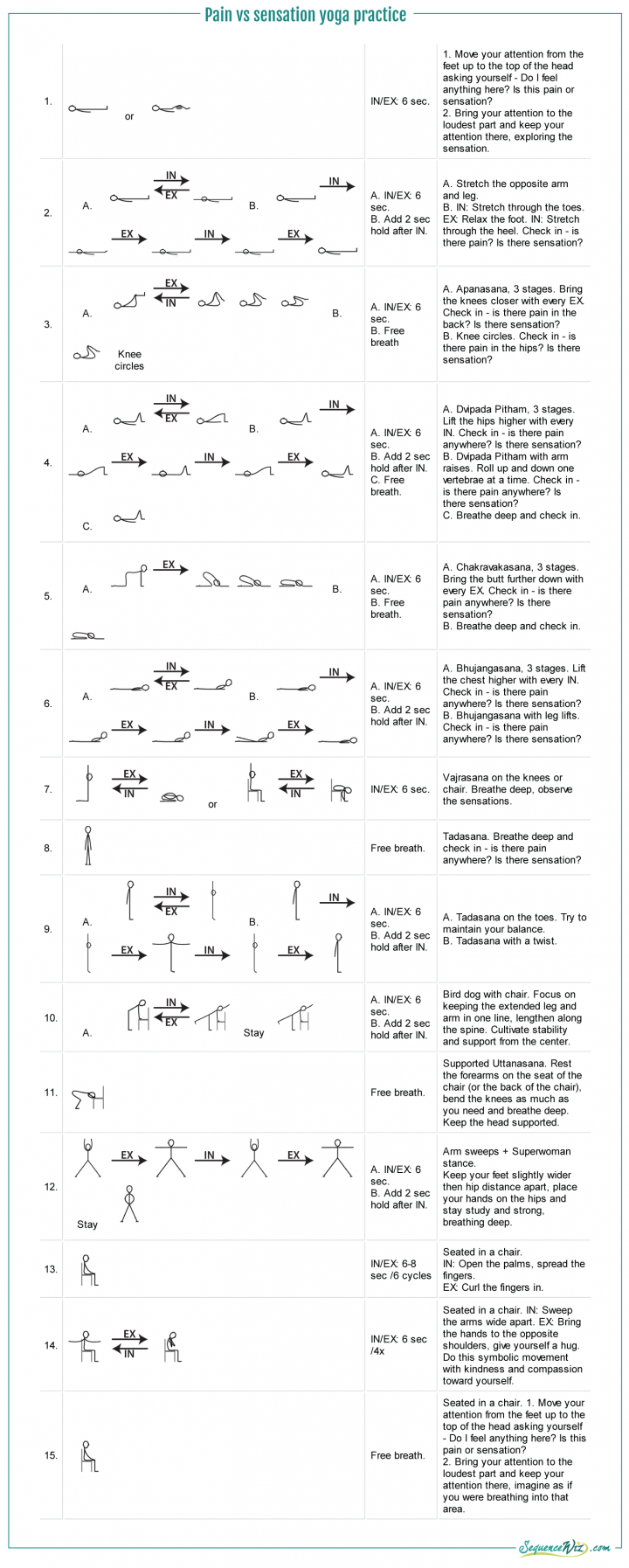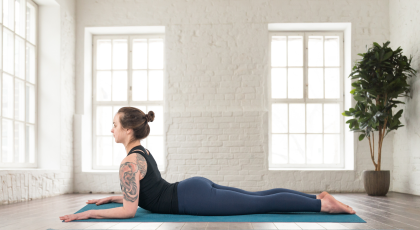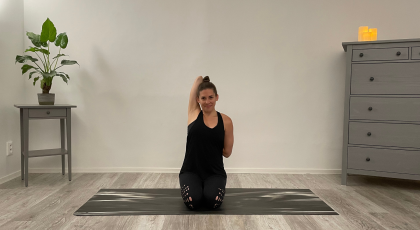View basket (0 items $0.00)

Yoga to Develop Your Awareness: Distinguishing between Pain and Sensation
Your brain interprets your bodily sensations based on context and experience. If you feel a rumbling sensation in your stomach and it’s almost dinnertime, you interpret it as hunger, based on the time of day and your previous experience of hunger. If you are on a deadline and struggling to finish your work on time, you might interpret the feeling in your stomach as anxiety and fear of failure, especially if you are prone to anxiety. If you had experience with irritable bowel syndrome you might interpret the same stomach sensation as a flare-up of your symptoms.
Yoga and Sensation Granularity
Our brains engage in these kinds of educated guesses all the time, and they rarely rise to the level of our conscious awareness. The brain goes through a quick elimination process, trying to find a past experience that best matches the current sensation in the current context. If in the past you experienced pain in your lower back every time you moved, your brain is more likely to interpret any sensation in your back as pain when you begin to move, based on experience and context.
That is why it is important to develop “sensation granularity,” the ability to distinguish between different types of sensations with more accuracy. If you learn to do this, your brain will be less likely to interpret stress as hunger or the sensation of muscle contraction as pain.
The best way to do this is to direct our focus to our bodies and pay very close attention to the sensations that arise. At first, it might be difficult to distinguish between pain and sensation, but the more we practice awareness, the easier it becomes.
The simple yoga practice below encourages you to pay close attention to your body’s response to each movement. It helps you identify specific movements that cause pain (if any), and differentiate between pain and normal sensations. It also allows you to start with small movement and then to gradually expand the range to ease your body and brain into movement without causing alarm. It reminds you to be kind to your body and treat it like you would a dear friend—with or without pain.

Want another great article on the origin of pain? Read Olga Kabel's - When You are Hurt, Where Does Pain Come From?
Study core strength and so much more with Olga Kabel and YogaUOnline - Yoga for Posture Improvement with Focus on Core Strengthening and Axial Extension.
Reprinted with permission from Sequence Wiz.
 Educated as a school teacher, Olga Kabel has been teaching yoga for over 14 years. She completed multiple Yoga Teacher Training Programs but discovered the strongest connection to the Krishnamacharya/ T.K.V. Desikachar lineage. She had studied with Gary Kraftsow and American Viniyoga Institute (2004-2006) and received her Viniyoga Teacher diploma in July 2006 becoming an AVI-certified Yoga Therapist in April 2011. Olga is a founder and managing director of Sequence Wiz- a web-based yoga sequence builder that assists yoga teachers and yoga therapists in creating and organizing yoga practices. It also features simple, informational articles on how to sequence yoga practices for maximum effectiveness. Olga strongly believes in the healing power of this ancient discipline on every level: physical, psychological, and spiritual. She strives to make yoga practices accessible to students of any age, physical ability and medical history specializing in helping her students relieve muscle aches and pains, manage stress and anxiety, and develop mental focus.
Educated as a school teacher, Olga Kabel has been teaching yoga for over 14 years. She completed multiple Yoga Teacher Training Programs but discovered the strongest connection to the Krishnamacharya/ T.K.V. Desikachar lineage. She had studied with Gary Kraftsow and American Viniyoga Institute (2004-2006) and received her Viniyoga Teacher diploma in July 2006 becoming an AVI-certified Yoga Therapist in April 2011. Olga is a founder and managing director of Sequence Wiz- a web-based yoga sequence builder that assists yoga teachers and yoga therapists in creating and organizing yoga practices. It also features simple, informational articles on how to sequence yoga practices for maximum effectiveness. Olga strongly believes in the healing power of this ancient discipline on every level: physical, psychological, and spiritual. She strives to make yoga practices accessible to students of any age, physical ability and medical history specializing in helping her students relieve muscle aches and pains, manage stress and anxiety, and develop mental focus.
Featured Courses








